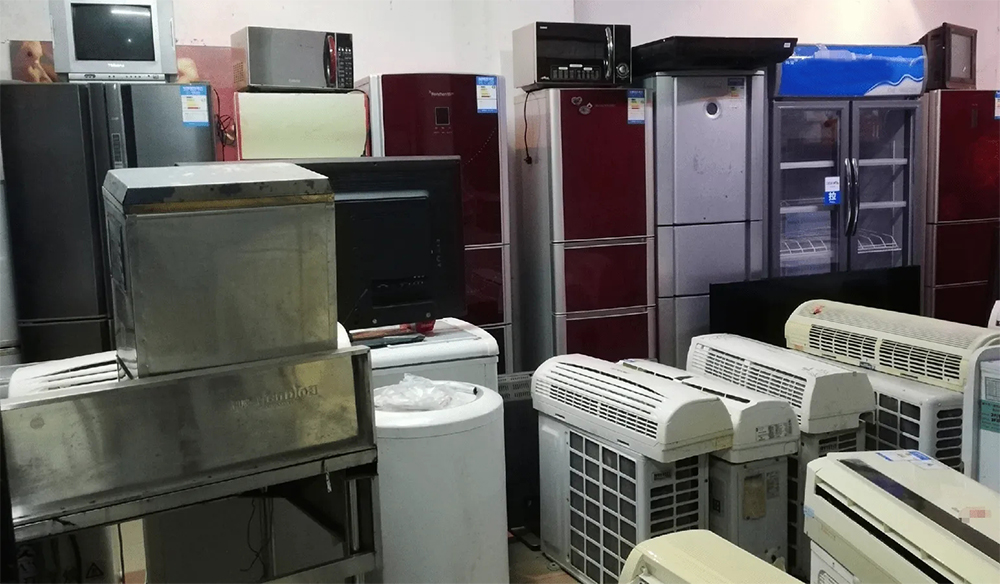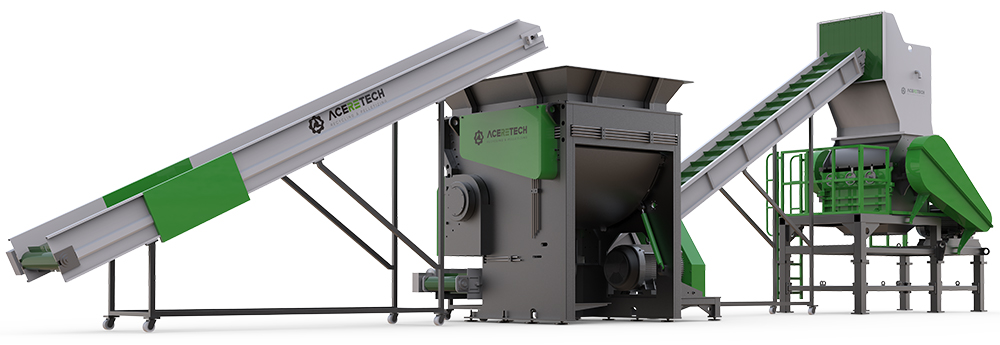Article paragraph
Ⅰ Overview
Ⅱ The main process of plastic granulation technology
Overview
Waste household appliances are entering the peak period of scrapping. Plastic is an important part of waste household appliances, and its weight ratio is as high as 30-40%, which has exceeded the output of metal materials in terms of output and volume. Therefore, the recycling of waste plastics has become a concern in the household appliance recycling industry. Plastics commonly used in home appliances are mainly thermoplastic materials such as polyethylene (PE), polypropylene (PP), polystyrene (PS), ABS resin, polyvinyl chloride (PVC), etc. and some thermosetting resins such as polyurethane. Resin foam, nylon and plastics added with glass fiber, etc. Among them, the five major materials of PE, PP, PS, PVC and ABS account for more than 85% of the whole household appliance plastic products.
Plastics in waste household appliances are currently mainly recycled through recycling. There are many ways to recycle plastics, the most important ones are mechanical recycling, chemical recycling, energy recycling and composting. The mechanical recycling method is also known as the raw material recycling method. The molecular structure of waste plastics basically does not change. There are two methods: direct recycling and melting recycling. Among the waste household appliance plastics, the sorting of plastics is relatively easy. The cost of recycling plastics is relatively low. Therefore, the melting recycling granulation method has become the main method of plastic recycling industry in my country's household appliances.
The main process of plastic granulation technology
Due to the complex shapes and different sizes of waste plastics, especially some large-scale waste products, they must be shredded into pieces or small pieces of materials of a certain size by means of shredding and crushing, so that they can be recycled.

Waste plastics are usually contaminated with oil, garbage, sediment, etc. to varying degrees. These impurities will seriously affect the quality of recycled plastic products. Therefore, waste plastics must be cleaned. The cleaning methods of waste plastics include manual cleaning, mechanical cleaning and ultrasonic cleaning. Among them, mechanical cleaning is a more common and mature cleaning method. There are two types of mechanical cleaning: intermittent and continuous. The cleaning process of waste plastics is divided into three processes: pre-wash, main wash and rinse.
The drying technology of waste plastics is an operation to vaporize and remove volatile components such as moisture and solvents in the material. It is a very important part in the plastic processing process, because many resins are easy to absorb moisture at room temperature, making their moisture content high. Therefore, it must be dried before molding, otherwise the molded product will have quality problems such as air bubbles and strength reduction, and become unqualified products. There are many drying methods for plastics, and the appropriate drying device and drying conditions can be selected according to the characteristics of the material, the shape, the change of the material during the drying process, and the drying mechanism. At present, the main drying methods are convection drying, vacuum drying and infrared drying.
Waste plastics generally need to be granulated according to the characteristics of the resin and the requirements of molding conditions before molding. The same type of plastic may have different granulation processes, and different types of plastics may also use the same granulation process under appropriate conditions. Since the plastics in recycled household appliances are often a mixture of PS, ABS, PP, etc. The best way is to granulate by adding special compatibilizer mixed waste plastic into co-rotating twin-screw extruder. In this way, compatibilizer-modified blended recycled plastic particles can be produced, and the diameter of the particles in the granulation process can range from coarse to ultra-fine particles. The advantage of this method is that there is no need to separate the mixed waste plastics, saving manpower and energy for sorting, and the plastic products made from the obtained plastic particles not only have improved performance, but also have excellent surface gloss.
The mechanical direct utilization of waste plastics is still one of the best methods. After the waste plastics are shredded, crushed, cleaned, and dried, certain additives are added, and then plastic particles are made to be processed into new plastics. The product method is the most worthy of use. At present, the process of plastic granulation of waste household appliances is relatively mature, but there are still many problems, which can only be solved through practice. Home appliance plastic granulation is one of the most environmentally friendly methods of home appliance plastic disposal, and it is also one of the methods to give full play to the best value of waste plastics. Therefore, waste plastic granulation will become the most important process for waste plastic treatment.
How to Recycle Waste Appliance Plastics?
2022/03/12